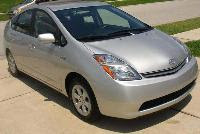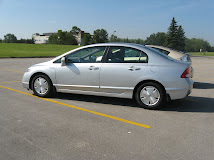I recently re-discovered a chart that had originally been published in one on Honda's 2007 environmental reports. In this chart Honda illustrates how much CO2 the Civic Hybrid produces above its gasoline only powered counterpart. The graph identifies the volume of CO2 produced during its first 100,000 Kilometers (62,000 miles) and it also identifies which aspect of the cars life (from production to use and disposal) contributes the most.

Let us just say, that when it comes to energy usage the Civic Hybrid produces far less CO2 and requires measurably less energy to operate for the first 100,000 km. Can you imagine how much of a discrepancy there would be if the study had been extended to 200,000 km?
What about the Toyota Prius, the most popular and ubiquitous hybrid in the world?

Pretty educational isn't it?
A few words:Since these two graphs were published by the two largest global producers of of Hybrid electric vehicles in the world, they carry a fair amount of similarities and results. What is remarkable is that despite the additional amount of resources and energy their fuel efficient and capable HEV consume during their production, they will require relatively little time and mileage to best their conventionally powered siblings.
Yes, these graphs were provided by both Honda and Toyota and not an independent source but it is the best and most authoritative we can get, which is far more than the shameful guesswork CNW did during their much controversial study.
No wonder CNW never allowed their work and claims to be peer reviewed. :(







